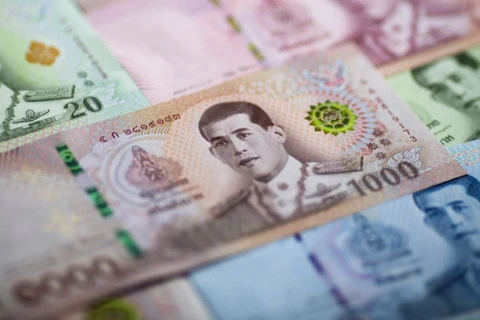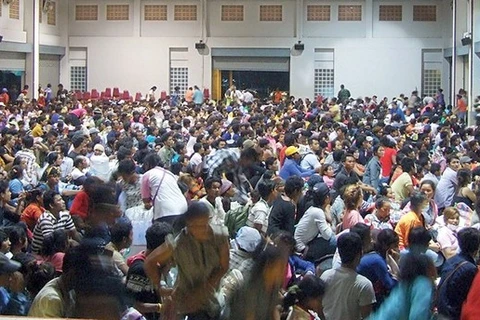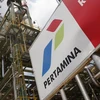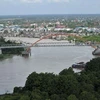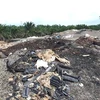Bangkok (VNA) – Bangkok authorities have stepped up the construction of underground "water banks" to better protect flood-prone areas against severe inundation.
Five water banks, with a combined capacity to hold 27,030 cu.m. of water, will be completed this year. The first project in Asok-Din Daeng road will be ready this August.
The Bangkok capital city of Thailand suffers flooding in rainy season and floodwater overflows from the northern region due to rising tide, which affects regional river branches.
The new flood prevention measure, which is modelled after underground water banks in Japan, involves a giant concrete well that can be used to retain rainwater during heavy downpours. The well is connected with pipes and gutters to receive flood water.
The construction of the underground water bank in Asok-Din Daeng road is already 40 percent complete, said deputy Bangkok governor Jakkraphan Phewngam.
This part has long been known as one of Bangkok's most flood prone areas because it is low-lying. Not only do residents along the roads feel worried over high levels of flooding when rain drenches the capital, but motorists also fear they will be trapped in subsequent heavy traffic congestion.
Four other wells will be built in high-risk areas.
Bangkok authorities are also using other measures to cope with floods, based on different geographical areas in the capital, Jakkraphan said.
"Pipe jacking", a technique to install underground pipelines with hydraulic jacks, is used on small crowded roads. In addition, the city will build five rainwater reservoirs with combined capacity of 141,100 cu.m. in the outskirts.-VNA
Five water banks, with a combined capacity to hold 27,030 cu.m. of water, will be completed this year. The first project in Asok-Din Daeng road will be ready this August.
The Bangkok capital city of Thailand suffers flooding in rainy season and floodwater overflows from the northern region due to rising tide, which affects regional river branches.
The new flood prevention measure, which is modelled after underground water banks in Japan, involves a giant concrete well that can be used to retain rainwater during heavy downpours. The well is connected with pipes and gutters to receive flood water.
The construction of the underground water bank in Asok-Din Daeng road is already 40 percent complete, said deputy Bangkok governor Jakkraphan Phewngam.
This part has long been known as one of Bangkok's most flood prone areas because it is low-lying. Not only do residents along the roads feel worried over high levels of flooding when rain drenches the capital, but motorists also fear they will be trapped in subsequent heavy traffic congestion.
Four other wells will be built in high-risk areas.
Bangkok authorities are also using other measures to cope with floods, based on different geographical areas in the capital, Jakkraphan said.
"Pipe jacking", a technique to install underground pipelines with hydraulic jacks, is used on small crowded roads. In addition, the city will build five rainwater reservoirs with combined capacity of 141,100 cu.m. in the outskirts.-VNA
VNA


